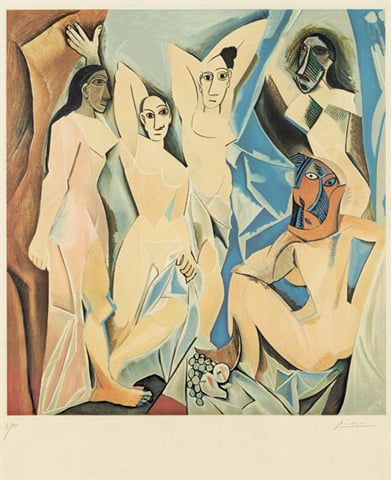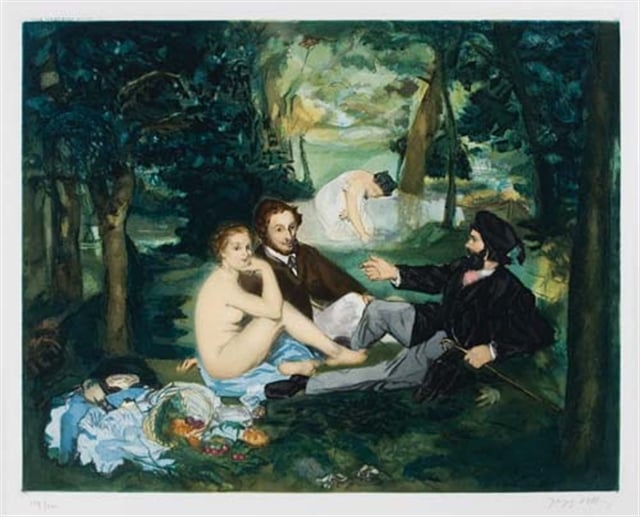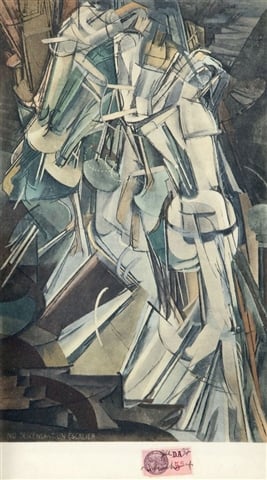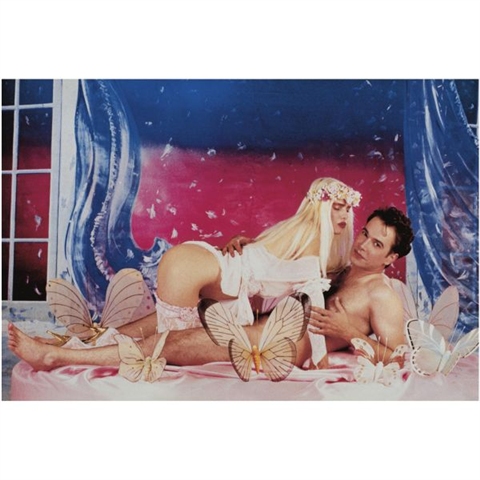Art Fairs
An Homage to the 1913 Armory Show
Learn more about the 100th anniversary of the groundbreaking 1913 Armory Show.

Learn more about the 100th anniversary of the groundbreaking 1913 Armory Show.

Christina Warner and Brittany Noris


After Édouard Manet, Dejeuner sur l’Herbe, 1929, color aquatint and etching, sold for US$5,800 at Swann Galleries
In 1863, the Salon des Refuses, or rather the “exhibition of rejects,” was the first presentation of works that were rejected by the jury of the official Paris Salon. Included in this landmark show was Édouard Manet’s famed painting, Le Dejeuner sur l’herbe (Luncheon on the Grass), which shocked the French public due to the appearance of a female nude, casually seated with two fully-dressed men in a rural setting. Manet’s confidence in his style pushed him to paint yet another controversial work in 1865, entitled Olympia. The composition is of another female nude confronting the viewer in both a very provocative and empowering manner. The significance of the work isn’t the nude model, but rather her confrontational gaze at the viewer, which represents independence, confidence, and sexual dominance over the viewer. These two works were iconic representations of the artist expressing his individual freedom. The controversial works by Manet pushed the boundaries of classical convention, but it wasn’t until 1907, when Pablo Picasso (Spanish, 1881–1973) painted Les Demoiselles D’Avignon, that the conventional guidelines of art were overturned.

Pablo Picasso, Demoiselles d’Avignon, 1960–1969, color lithograph, sold for US$16,029 at im Kinsky
Les Demoiselles D’Avignon depicts five naked women composed on flat, splintered planes with faces inspired by Iberian sculpture and African masks. This work was the starting point for Cubism, as it symbolized Picasso’s rejection of traditional composition, subject matter, and perspective. This flattened perspective and fragmented composition opened the door to the new movement of Cubism, a period of art when works lost their original form, and were broken down and reassembled. This fragmentation of objects widened the perspective from one single view to a multitude of viewpoints. These works were the building blocks in forming the course of art history, as this style was adopted by many artists and inspired many of the future movements, including Fauvism, Expressionism, and Futurism. In 1913, several American artists, including Walt Kuhn (American, 1877–1949), Walter Pach (American, 1883–1958), and Arthur Davies (American, 1862–1928), formed the Association of American Painters and Sculptors with the intent of dictating trends and shaping the mainstream’s taste in art.

Marcel Duchamp, Nude Descending a Staircase, No.2, 1937, pochoir-colored reproduction and a French 5-centime revenue stamp, sold for US$104,500 at Christie’s New York
They curated the 1913 International Exhibition of Modern Art, or rather the Armory Show, an exhibition of giant proportions that would represent a collection of works from the most avant-garde artists of the time, including Pablo Picasso, Georges Braque (French, 1882–1963), Henri Matisse (French, 1869–1954), and Marcel Duchamp (French, 1887–1968). The highlight from the fair was none other than Nude Descending the Staircase by Marcel Duchamp. It seemingly depicts a figure in motion assembled in such a way that conveys movement within an Abstract composition. The breaking up of body parts into fragments represents the key characteristics of Cubism, and how this technique of isolating elements tends to force the figure to merge into itself and get lost in the canvas. Undeterred by critical and public perception, the artists represented at the 1913 Armory Show each provided an enterprising spirit that moved the course of art history forward. The stigma in their approach, technique, and subject matter would begin to fade as artists following in their footsteps expanded on concepts once deemed controversial and procedures newly imagined. Artists such as Andy Warhol (American, 1928–1987) and Robert Rauschenberg (American, 1925–2008) experimented with appropriated imagery and new printing processes in works that boldly comment on the tendencies of contemporary culture. Taking a cue from Cubism, artists de-constructed their medium in order to engage the audience and reveal new perspectives on the subject.

Jeff Koons, Ilona on Top (Rosa Background), 1990, oil inks on canvas
With growing confidence, artists continued to tackle the controversial and find new ways to expose their unique visions to the public through performance art, digital photography, video installation, and Street Art. From Joseph Beuys (German, 1921–1986) to Francis Bacon (Irish, 1909–1992), Jean-Michel Basquiat (American, 1960–1988), or Jeff Koons (American, b.1955), there is little that seems to generate shock. Various and different perspectives are not only welcomed, but are celebrated in today’s art world, and this is all owed to the pioneers of Modernism.